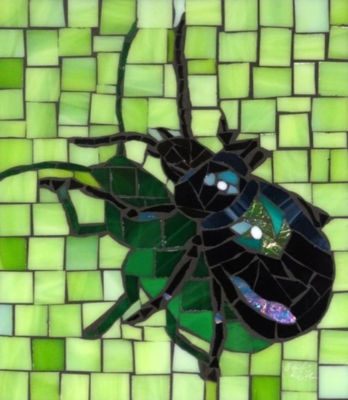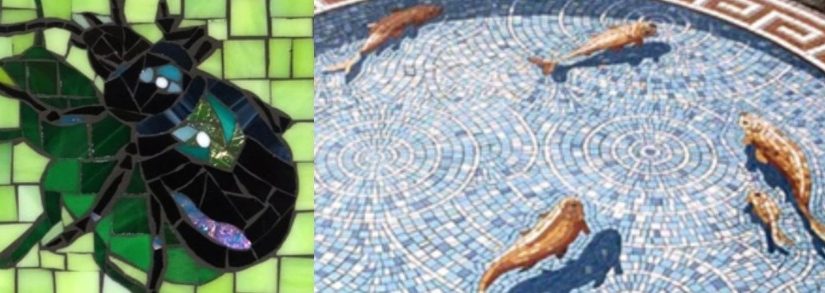Have you ever wondered why shadows are used in mosaic tiles? Artists use them for various purposes, but they are used to enhance the appearance of the design and to make it pop out more. Some of the most popular designs used in ceramic mosaic tiles make use of shadows to enhance the look and to make it look more realistic and appealing. Find more about the purpose of a shadow and how it enhances a mosaic tile below.
The design process
Using shadows in mosaic tiles is not an easy feature to add. The designer/artist needs to decide where the direction of the light source is coming from and keep that consistent throughout the design process. Once the light source has been established, the designer/artist needs to make sure that the light source interacts with the image or scene correctly otherwise it won’t look realistic and spoil the design of the mosaic tile.
Besides the light source, the angle of the shadow that the light source would create as this would determine where shadows are added to the design. A misplaced shadow could ruin the entire design and cost thousands of dollars to fix if not detected in the design process. Additionally, the size and shape of the objects being used in the design would have an impact on the shadow and how it interacts with the overall design. Having a large object could cast a long shadow that might cover up an important part of the design.
If you have all of these factors determined and planned out, then creating beautiful pieces of mosaic tiles with intricate designs could add a tremendous amount of value to the room or swimming pool you are redecorating or revamping. So be sure to take careful consideration of the above.
What type of shadows are there?

Before the design process (detailed above), an artist/designer would need to decide which type of shadow to use when creating mosaic tiles. Three types of shadows can be used when creating a mosaic tile design; cast shadow, core shadow, and drop shadow. Each one has a very different appeal and enhances the design in different ways.
Cast shadow
This is the most common type of shadow used on mosaic tiles. You probably have seen this quite often when selecting mosaic tiles for your swimming pool or room in the house. This type of shadow creates a large angular deviation and provides some depth to the design.
The angle that is chosen when using this shadow will determine how large or long the shadow is cast on the design. Below is an example of a cast shadow being used.
Drop shadow

A drop shadow is formed when the object blocks most of the light creating a shadow on the surface right behind it. To make it easier, the light source, the object, and the shadow is in a straight line or has a very small angular deviation. Because of this, the shadow can appear as an outline of the object. It can also look like the shadow is attached to the body from one side. As if it just dropped from the body. Take a look at the Koi fish in the picture below as a visual reference to how a drop shadow is used.
Core shadow
Core shadows are different from the other two types of shadows mentioned above. These are formed on the object itself rather than the surroundings. Meaning the shape of an object creates shade on it due to curvature, corner, etc. A corner of a box appears a bit darker than the areas closer to the light source.
A core shadow may not sound like much, but it does give the design a 3D feeling. It allows you to feel the depth of an object and add a different element to a general design or pattern.
How does it enhance a mosaic tile?
As you know, using shadows on mosaic tiles requires the artist/designer to visualize the design, the shadow being used, and the angles, shapes, and sizes of the objects in the design. With all of the above determined the artist/designer will start the process of creating the pattern/design and adding in the shadows where needed.
Adding shadows to the design/pattern, the artist can either provide depth or bring an object to life and enhance the visual appeal of the design. Having a mosaic tile created with shadows gives you an entire range of options when installing the mosaic tile. For example, if you use a drop shadow on fish (example above) and install the tiles in a swimming pool, it would make the fish look as if they are actually in the pool swimming around, giving the pool a very aesthetic and unique appeal.
Oftentimes, a shadow coupled with striking colors can have incredible effects that can be both mesmerizing and hypnotic to look at. This is what makes the use of a shadow so appealing when creating a mosaic design.
If you are looking for unique mosaic tiles to add a different element to your swimming pool, don’t hesitate to give us a call or order from our range of ceramic tiles on our website.
